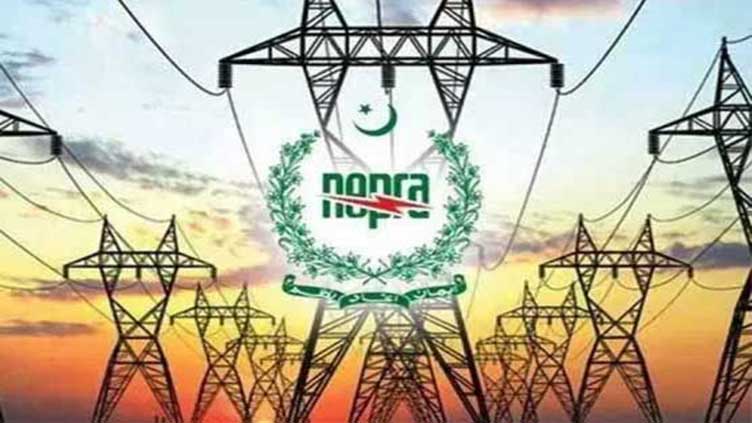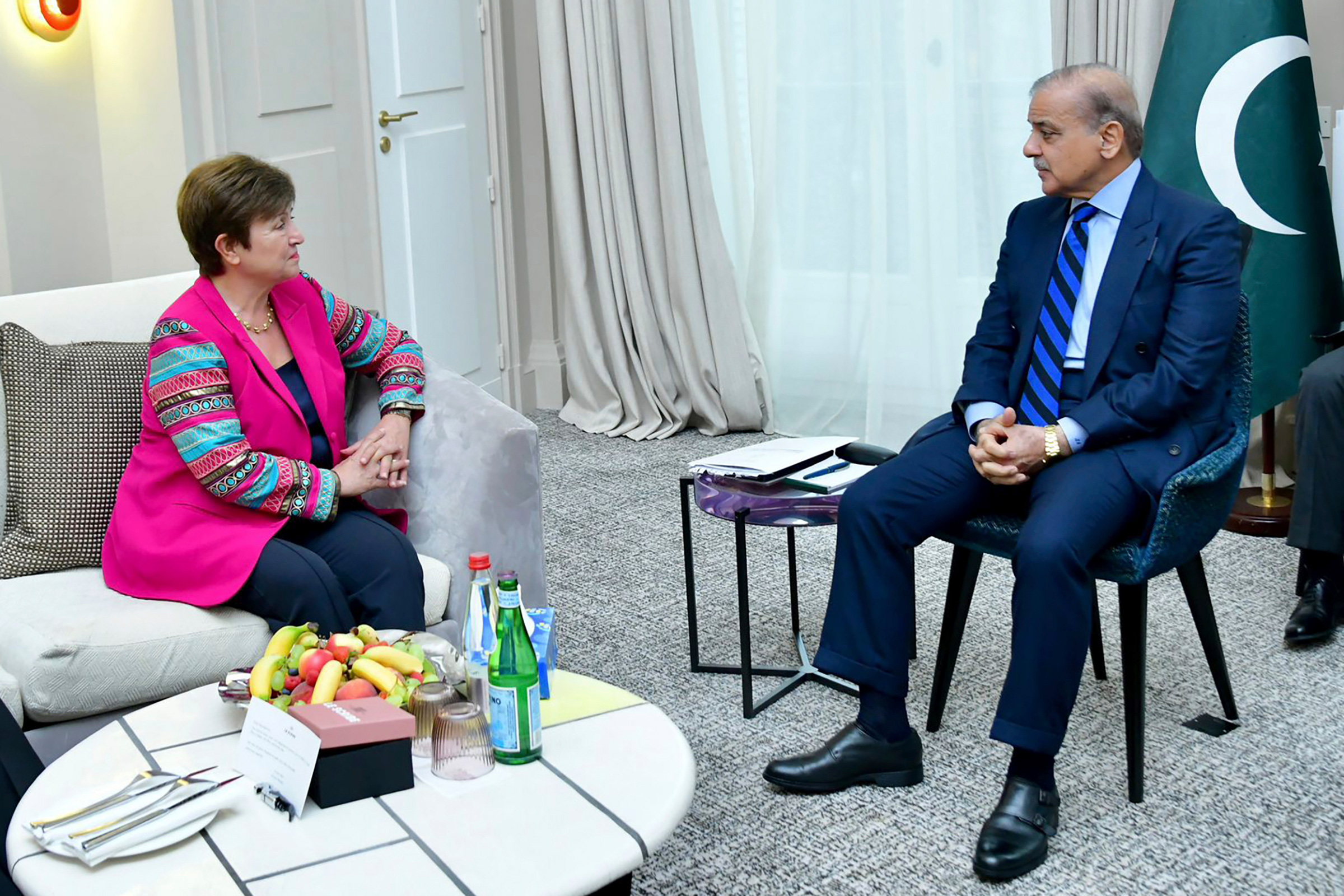Why a $3 Billion IMF Loan Isn't Enough to Save Pakistan's Economy
In June, Pakistan was in a race against time to secure $1.1 billion from the International Monetary Fund (IMF) in a bid to solve its worst economic crisis since gaining independence from Britain in 1947. Days before an existing bailout package was set to expire, the country’s prime minister, Shehbaz Sharif, held last-minute talks with the IMF after scrambling to meet its austerity conditions, in which he pledged to revise Pakistan’s budget by hiking tax rates and cutting spending.
That led to a dramatic reversal from the global lender: it
announced a new, bigger-than-expected conditional loan of $3 billion, which the IMF calls a stand-by arrangement (SBA). On July 12, the IMF’s Executive Board approved the deal, allowing for an immediate disbursement of about $1.2 billion.
Watch: Trump and 18 Co-Defendants Mug Shots In Georgia 2020 Election Case Watch: Trump and 18 Co-Defendants Mug Shots In Georgia 2020 Election Case
“The new SBA would provide a policy anchor and a framework for financial support from multilateral and bilateral partners in the period ahead,” the IMF stated.
While the deal offers a respite to Pakistan’s ailing economy, experts warn the country is far from solving the structural problems that led to defaults in the past.
Prime Minister Shahbaz Sharif, right, meets with International Monetary Fund's Managing Director Kristalina Georgieva in Paris, France, on June 22, hoping to unlock a $6 billion bailout and gain the release of a critical tranche of $1.1 billion in loans which has been on hold since November.
Prime Minister Office/AP
“Pakistan has been living beyond its means by borrowing from bilateral lenders and multinational institutions,” says Steve H. Hanke, a professor of applied economics at Johns Hopkins University. “All this borrowing has done Pakistan little good.”
Over the years, the IMF has drawn criticism for its lending practices, with Nobel Prize-winning economist Joseph Stiglitz
arguing that many of the conditions it imposes on borrowers—like fiscal austerity and high-interest rates—have often been counterproductive for impoverished countries, and devastating for their local populations. In the case of Pakistan, it appears the IMF is not deviating from its traditional course.
Here’s what to know about Pakistan’s economic crisis:
What has caused the downturn in Pakistan’s economy?
Pakistan, a nation of 240 million people, has a
gross domestic product of $376 billion, slightly larger than Hong Kong’s. Its economy was already struggling after years of financial mismanagement, but last year, the country was pushed to the brink by a global energy crisis caused by Russia’s war in Ukraine and catastrophic floods that impacted the lives of millions of Pakistanis.
“We call it the ‘Triple-C crisis’: COVID, the conflict in Ukraine, and climate change,” says Abid Qaiyum Suleri, the executive director of the Sustainable Development Policy Institute in Islamabad. “All three factors aggravated Pakistan’s economic situation.”
The 2022 floods—which at one point drenched a third of the country, displaced 8 million people and damaged more than 2 million houses—also resulted in economic losses of more than $30 billion, according to an assessment from the Pakistani government in partnership with the U.N., the E.U., the Asian Development Bank and the World Bank.
Read More: Pakistan Flooding Raises Tough Questions About Who Should Pay For Catastrophic Climate Impacts
Crushing poverty and shrinking job prospects have also driven emigration out of the country. In 2022, the Bureau of Emigration recorded more than 750,000 people leaving Pakistan, a threefold increase from 2021.
Pakistan recorded record-high inflation of 38% for two consecutive months in June as Sharif, the prime minister, struggled to implement a recovery plan. To boost its popularity with voters, the government increased energy subsidies and depleted the country’s foreign exchange reserves to a critically low level of $2.9 billion, the lowest in nine years.
What is Pakistan’s latest arrangement with the IMF?
Under the new agreement, the IMF will disburse $3 billion over nine months. To clinch the deal, Pakistan revised its annual budget by raising taxes by $750 million and hiking its interest rate to 22%, mainly to curb soaring inflation.
The austerity reforms came after Sharif spoke on June 27 about the bailout funds with IMF Managing Director Kristalina Georgieva, who said Pakistani authorities had taken “decisive measures” to bring policies in line with the IMF’s economic reform program.
The deal replaces a four-year Extended Financing Facility program of $6.5 billion, originally signed by former Prime Minister Imran Khan in 2019, which expired last month. Last November, it was due for its ninth review by the global lender after previously clearing eight of the 11 reviews. But Khan’s government deviated from its IMF obligations days before he was ousted from the government in a parliamentary vote.
To date, Pakistan has relied on 23 IMF relief programs. Husain Haqqani, a former Pakistani ambassador to the U.S., likened the IMF to an intensive care unit (ICU) for Pakistan. “But if somebody has to go to the ICU 23 times, then something is wrong with the overall treatment plan,” he says.
Will the IMF’s new deal help Pakistan’s economic recovery?
The new IMF funds will likely bring short-term relief by unlocking credit from other financiers, including the private market, and strengthening prospects for foreign direct investment. One day before the IMF board meeting, Saudi Arabia announced it would provide Pakistan with $2 billion in financial support.
“It’s bridge financing that would provide some sort of breathing space to help in mobilizing funds from friendly countries, as well as from other multilateral donors,” says Suleri.
However, analysts and political advisers speaking to TIME also warned that in the long term, they are only a band-aid solution unless Pakistan can implement the serious, large-scale reforms required to tackle issues like a heavy reliance on costly fuel imports, an agricultural sector grappling with water and energy shortages, a lack of investment in public welfare, and a political elite prone to corruption.
What’s more, the government now faces repaying $25 billion in debt in the current fiscal year, which it would likely struggle to repay without further financial assistance from lenders like China and Saudi Arabia, as well as another IMF bailout.
Read More: China Spent Years Lending to Low-Income Countries. That’s Becoming a Problem.
“The good news is that a lot of Pakistanis are now saying that we need a fundamental shift in our economy,” says Haqqani. “The bad news is that there’s still no clarity on whether the elite is willing to give up their privileges and prerequisites.”
He continues, “Will the government be strong-willed enough to push back sufficiently to get what it wants? That is going to determine where things go next.”
The cash-strapped nation clinched the crucial bailout hours before the IMF's deadline.

time.com











